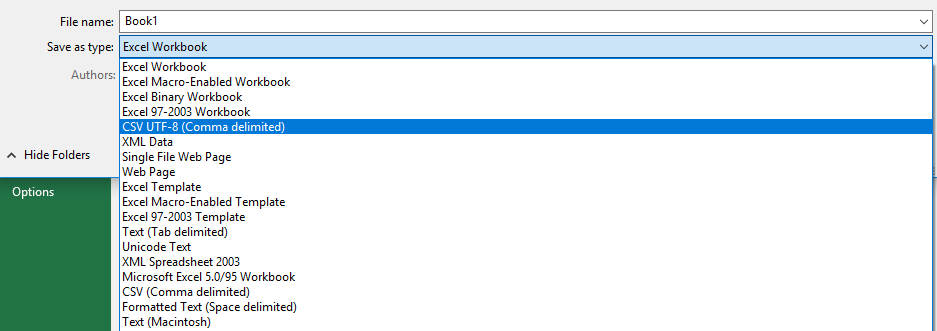The Difference Between a CSV and Excel Spreadsheet
※ Download: Difference between csv and excel
And even more important: Which one should you use? They do nothing else but hold data - no text formatting for example. Second, despite the name comma-separated values , I believe the actual separator used depends the settings in the Region and Language Option control panel. They do nothing else but hold data - no text formatting for example.

The difference between CSV and XLS file formats is that CSV format is a plain text format in which values are separated by commas Comma Separated Values , while XLS file format is an Excel Sheets binary file format which holds information about all the worksheets in a file, including both content and formatting. You haven't explained what you are using it for... Windows: 1709 Build 16299.
Difference Between CSV and XLS - The answer — like so often: It depends.

Without commas the import performs properly. It works great if it reads it as an Excel csv file. Suggestions on a resolution...? A CSV file is by strict definition a TXT file with comma separated values. In reality, there are many different characteres used as the delimiter of the values; a semi-colon ; , tab or a pipe being a couple of more common. A pair of these are used to wrap text fields that may or may not contain the character used as the delimiter. You have to be careful that a full quote does not appear within the wrapping quotes or the result is malformed garbage. Other than that, a CSV is a CSV. Different programs will use different rules to import a CSV and you often have to tailor the CSV file to suit. Excel's import from text Data tab, Get External Data, From Text allows for various deliminator characters as well as different encapsulator characters. You can also specify text input on a particular field of information so a large number remains as a large number and is not converted to scientific notation. Without commas the import performs properly. It works great if it reads it as an Excel csv file. There may be several factors in play here. I have not experimented to see their differences. I suspect but don't know for sure that the difference between CSV and CSV Macintosh is the line terminator CR, LF, CR LF or LF CR. And IIRC, there is only a subtle difference between CSV and CSV MS-DOS which probably does not apply to you. Do a Google search. Second, despite the name comma-separated values , I believe the actual separator used depends the settings in the Region and Language Option control panel. The exporting application and importing application must agree. Finally, there really are no standards for the CSV file format. But it is really post-facto to most implementations. Moreover, such standards only specify the content of the file export encoding ; they do not impose standards on how to read import interpretation the file. I suggest that you open the CSV file using Notepad to how your data is actually written to the file. Excel double-quotes strings only as-needed to avoid confusion with the list separator. The basic difference is that using Save AS with the CSV option results in a. This results in a file with a. With a 'standard' CSV file, you can open it in Excel simply by identifying it to Excel or double-clicking its filename in your file browser. Excel automatically attempts to interpret it as a CSV file with commas for field separators and double-quote characters for text delimiters. A word about the text delimiter: Normally they are only added to a field when that field contains the separator character itself - as in your address with a comma example. I am free because I know that I alone am morally responsible for everything I do. Heinlein This situation is perplexing to me and thanks for your response with some great information.
The Windows and Office versions on both machines are identical. Comma Separated Variables are just data, separated by commas. Columns of data are separated by commas, and each row of data ends in a carriage return. The window looks similar to the screenshot on the right side. Other than that, a CSV is a CSV. XLS files can only be read by applications that have been especially written to read their format, and can only be written in the same way.



